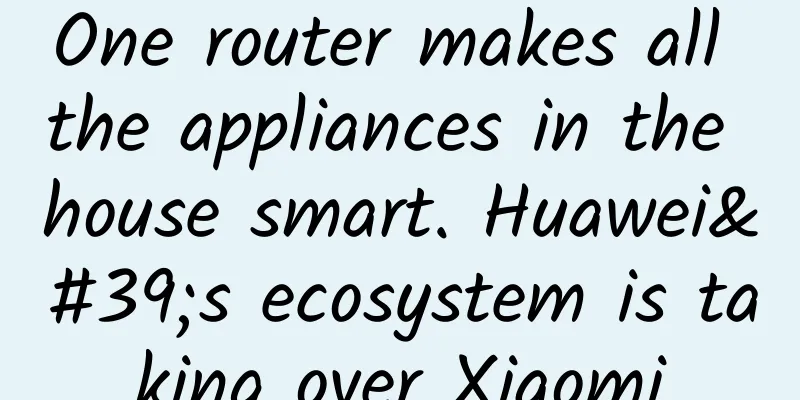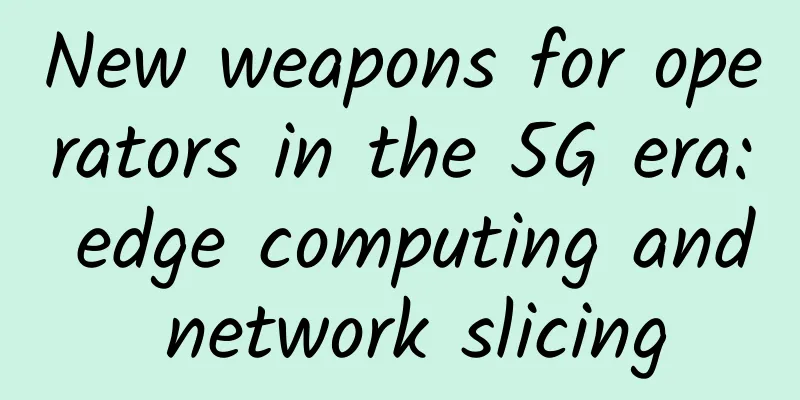One router makes all the appliances in the house smart. Huawei's ecosystem is taking over Xiaomi

|
At present, among China's smart home brands, it can be said that Huawei and Xiaomi represent two different forces, and are also two brands walking on different paths. Xiaomi, through investing in and holding controlling stakes in a number of new small appliance brands, has formed a closed smart home system with self-research, self-production and self-sales; while Huawei, with routers as the core, has created an open smart home ecosystem through the HiLink ecosystem, plug-in compatibility, self-operated shopping mall and offline experience store model. It is hard to say which of the two ecosystems is better. But after changing to a Huawei router, I found something very scary in the router management app (Huawei Smart Home). It turns out that there are so many devices in my home that can be connected to the Internet. In terms of product types and models, the richness of Huawei's smart home ecosystem has gradually surpassed Xiaomi, and the gap is becoming more and more obvious. Therefore, if you also use a Huawei (Honor) router at home, you might as well open the APP and take a look. There may be many surprises waiting to be discovered at home. First step, open the Huawei Smart Home App: In the second step, click "Toolbox", then click "Add and Manage" in the service area: In the third step, in addition to seeing many fun plug-ins, there are also 7 smart home protocol conversion plug-ins, including Midea Smart, Bose Speaker, Philips HUE Bridge, LIFX Light, TP-Link Smart Light, Yeelight, and Lumi Smart. After I installed the Midea smart plug-in on the Huawei router, four Midea air conditioners appeared in the Huawei Smart Home App. I can throw away the remote control and use the Huawei Smart Home App to manage the air conditioners at home. In the protocol conversion plug-in, I also found two brands belonging to the Xiaomi ecosystem: Yeelight and Lumi Smart. This means that as long as this plug-in is installed, the devices of these two brands can also be managed through the Huawei Smart Home App. Huawei routers use protocol conversion to create an ecosystem with a plug-in application. Every smart device in the ecosystem can become part of Huawei's smart home. For example, Midea has many categories such as air conditioners, electric fans, rice cookers, humidifiers, etc., and most of them have been intelligentized. Therefore, Huawei's smart home ecosystem, which has already won seven major ecosystems, has obviously surpassed Xiaomi in terms of device types and models. This is also one of the key reasons why Huawei has always insisted on focusing on routers after entering the smart home field. |
<<: How to cut data center costs without sacrificing performance?
>>: Best practices for data center operations and maintenance of critical facilities
Recommend
Getting started with SD-WAN, just read this article
In 2019, the global market for SD-WAN grew by 70%...
China Unicom begins deploying 2G network and stops all services
2G outdated communication technology will inevita...
5G security from the perspective of the US report on 5G infrastructure threat factors
introduction On May 10, 2021, the National Securi...
Yecao Cloud: Hong Kong cloud server/VPS annual payment starts from 138 yuan, dedicated server starts from 299 yuan/month, BGP or CN2 line
Yecaoyun is a Chinese hosting company founded in ...
What will the Internet look like in 10 years?
The Internet has evolved tremendously over the pa...
UFOVPS limited 30% off, Japan/Hong Kong CN2 GIA/US high-defense VPS monthly payment starts from 26 yuan, top up 200 yuan and get 20 yuan
UFOVPS has launched a promotional event during th...
Tencent Cloud Double 11 Early Purchase: 2C4G8M cloud server only 70 yuan/year, renewal can get coupons
Tencent Cloud has launched the Double 11 warm-up ...
NB-IoT smart door magnet market stimulated by the epidemic
In 2020, at the beginning of the new year, a &quo...
5G has nothing to do with WiFi
A quick note: the Wi-Fi that all of our connected...
Why edge computing is central to the development of the Internet of Things
Many connected devices today are able to take adv...
80VPS: Hong Kong/Japan/Korea/USA 1-16C cluster server starting from 800 yuan/month
A friend talked about cluster servers. I recently...
Changing the quality of cultural experience with 5G
Museums are vital centers of culture, education, ...
The rise and fall of online storage in the past decade: persistence is not easy, and free storage is not sustainable
Network storage has always been a way of storing ...
Network cabling management issues in data center transformation and upgrading
Cabling is an important part of the internal netw...
The industry chain works together to make great progress in 5G messaging
2020 is a critical year for my country's 5G c...









![[Important] IDC and Deepin Technology jointly released the technical white paper "Three Highs Application Delivery to Realize the All-Round Experience of Digital Natives"](/upload/images/67eb9cb13c0f1.webp)